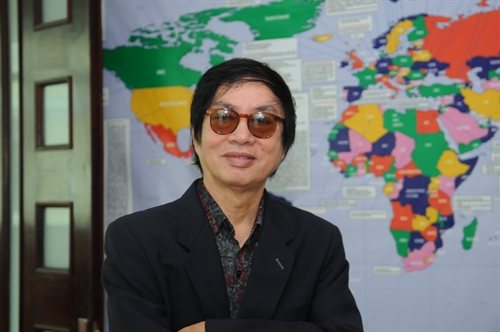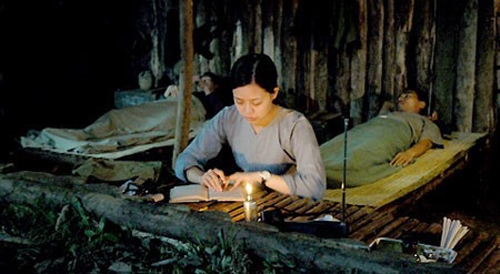 Life & Style
Life & Style

Đặng Nhật Minh’s most recent feature film, Don’t Burn, adapted from the war diary of MD Đặng Thùy Trâm, shows the director’s mastery of his art developing.
 |
| Director Đặng Nhật Minh. VNS Photo |
by Dan Hambleton*
Đặng Nhật Minh’s most recent feature film, Don’t Burn, adapted from the war diary of MD Đặng Thùy Trâm, shows the director’s mastery of his art developing. The story could be told in many ways. One possibility would be to present the story from “a third person” perspective in chronological order, strictly following the events of Doctor Trâm’s diary.
It could also be told from the point of view of the doctor herself, or through the eyes of her friends. Minh chose a radically different approach. He continually shifted the action between different locations as well as different points of view to show parallel lives, the point of view of the young doctor and her colleagues in the Vietnamese medical unit in the jungle, contrasted with the point of view of an American soldier.
There are also continual shifts in time, between the present, past and future, as well as dreams. This shifting and varying of sensory experiences, experiences drawn from Doctor Trâm’s youth and adult life as well as from the life of the American, keeps the viewer off balance.
The viewer is often not sure where he is in the stream of time of this story that is both horrific and compelling. He finds himself unable to quickly form conclusions. Instead the film takes him on a journey inward, going deeper and confronting questions about war and killing and following orders, but also about life’s purpose and the meaning of family and relationships and love.
The film develops a weight and power in the process that accumulates as it goes deeper. If the director dryly or superficially laid out these issues at the outset, the viewer could easily respond with biased or preconceived opinions. Instead, the journey Minh takes the viewer on causes that person to become a participant in the experience.
In the process of the film, Minh leads and coaxes, skillfully guiding the viewer to the heart of the matter. The viewer finds himself confronting issues that he may have been otherwise unwilling to face. The director can now drive home his point. The viewer now sees it clearly and has been led there kindly and the result is a catharsis on the part of the viewer, who has now entered the characters’ world.
The means that Minh uses to achieve such catharsis in Don’t Burn are the same tools that most filmmakers use: settings and scene composition, colour or black and white cinematography, actors, dialogue, music. Yet in Minh’s films each of these important elements is harnessed for a single purpose. Sensing this, the actors become participants in a common cause.
They cease to be actors. Their words are no longer actors’ lines of dialogue, but become real expressions coming deep from within their own hearts. In the same way, cinematography, frame composition and lighting are all there for the same purpose. They too no longer exist independently but instead serve the director’s higher purpose.
Because of this, the cinematographic shots take on a beauty rarely seen in films. They become richer, imbued with meaning and purpose. This purpose touches the hearts of the viewers and makes the scenes ever more beautiful. The music also contributes to Minh’s goal, modestly joining the films’ other elements in the reality that is unfolding on the screen.
So much more can be said about Minh’s films. The overriding sense from each of them is compassion, a deep insight into the human condition and empathy for others no matter how insignificant they may seem. It’s no wonder the tears flow. The viewers are given a deeper sense of their own lives. They’re lifted to a higher plane. Their own significance and the preciousness of life come into sharper focus and they understand, with an appreciation they may never have had before, the dignity of every other person sharing this experience. — VNS
* Charles Daniel Hambleton is a US freelance artiste by training based in Hà Nội. He held various jobs to support his artistic career including working as a subcontractor for a vinyl repair business and owner of a commercial window cleaning service. A certified ESL trainer, he has been teaching English at various centres in Hà Nội and also held painting exhibition in the city’s Old Quarter.
 |
| Lessons: A class scene held in the jungle in "Don’t burn". — Photo courtesy of Đặng Nhật Minh |
 |
| Dear diary: Entrusting her innermost feelings in her diary. Dr. Thùy did not expect one day the world would see the war through her eyes.— Vov photo |




